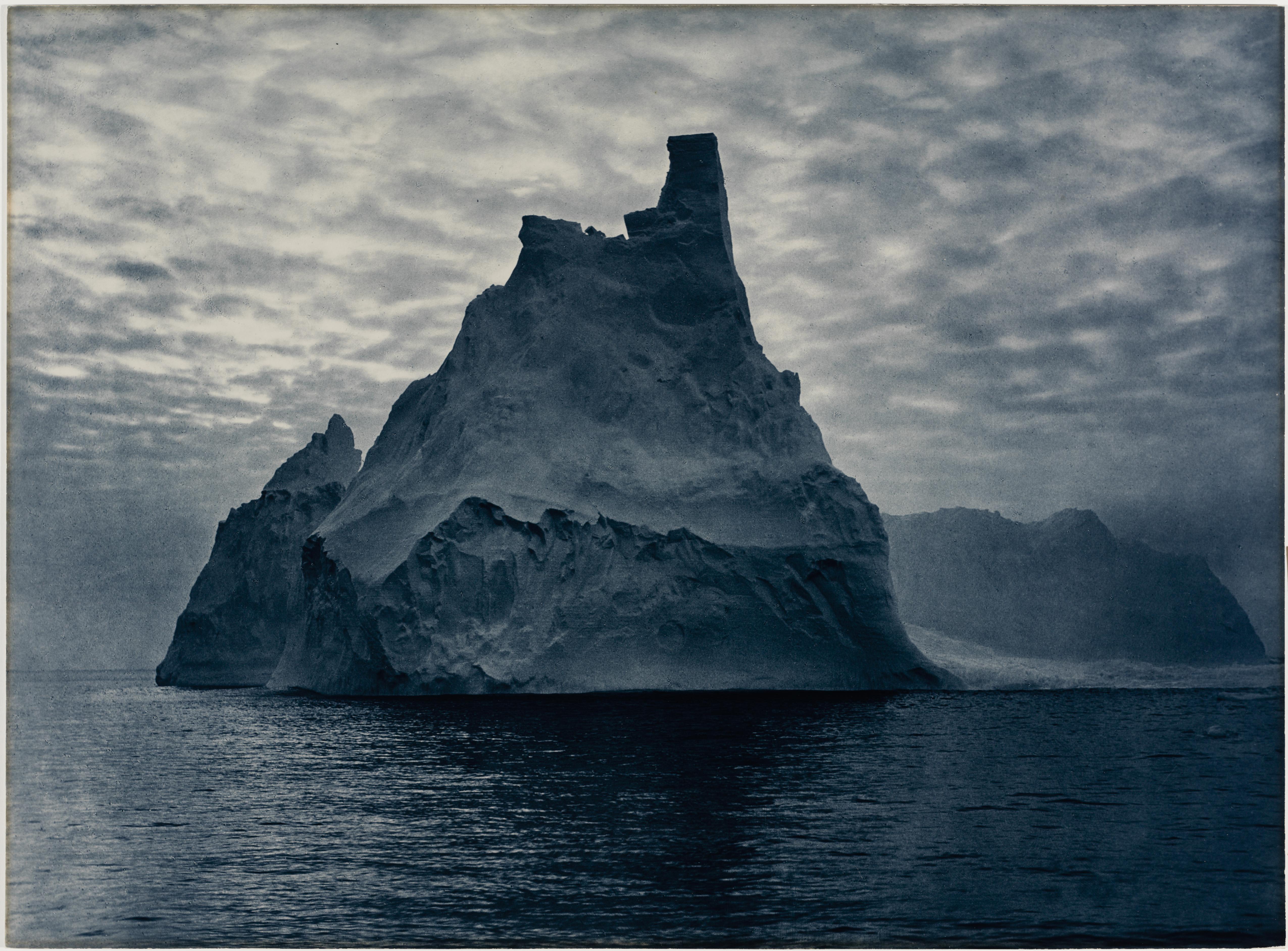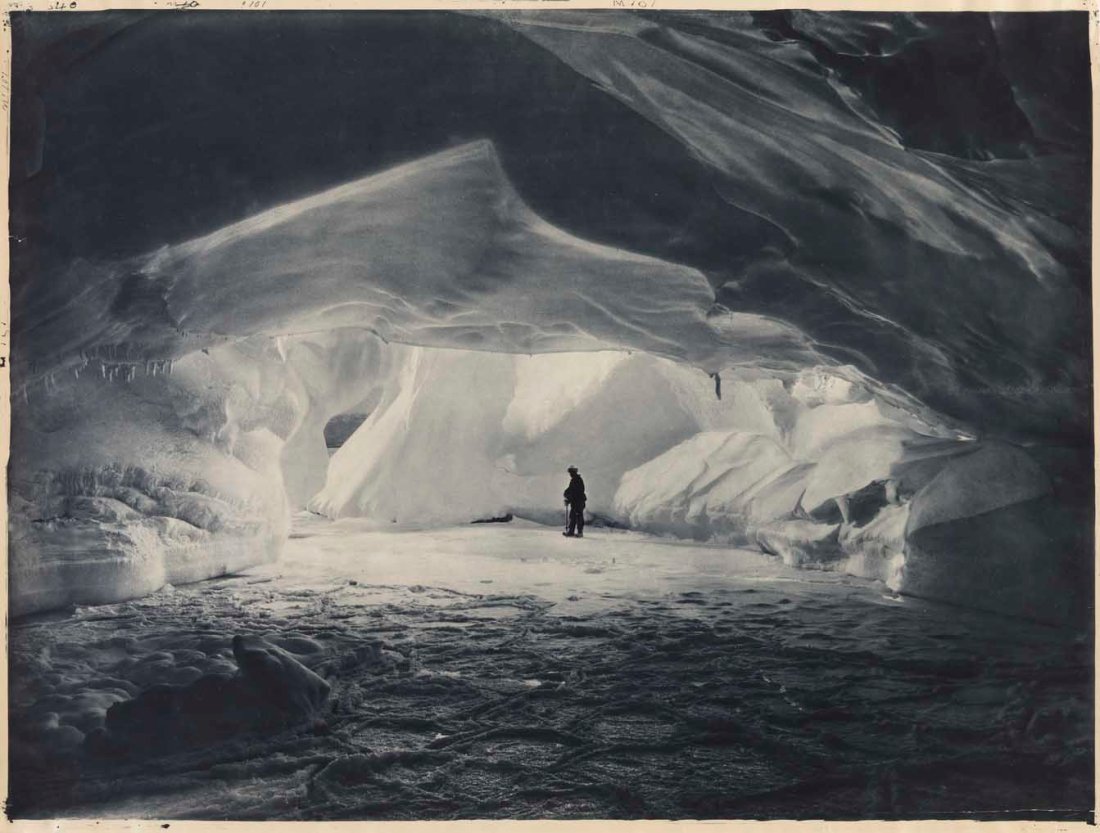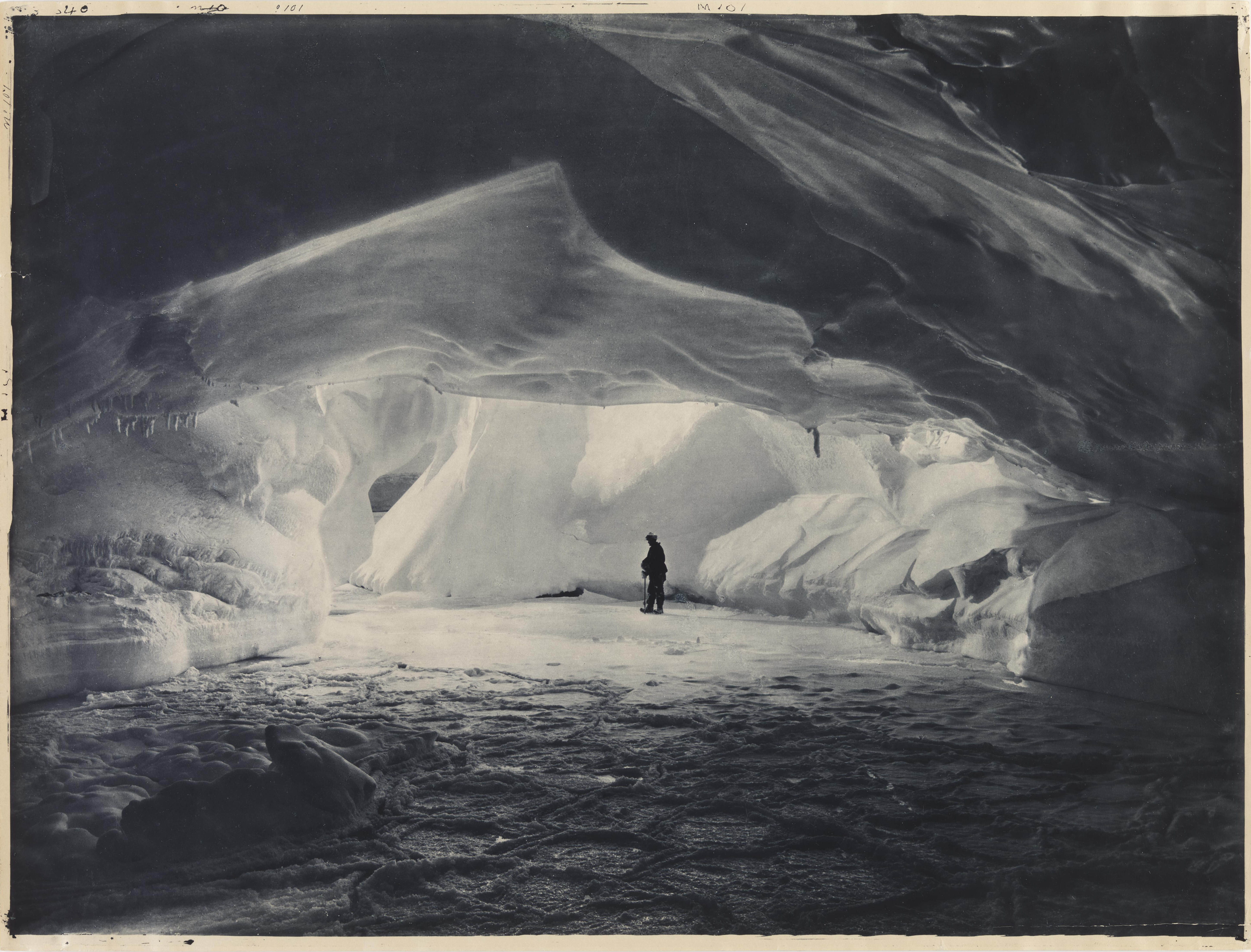
Gazing at the grey curtains of fog from the deck of our ship, so tiny in the surrounding vastness, we felt like Argonauts whose quest had led to the World’s brim. Slowly we crept on, filled with wonder and expectancy … Through a rift we made out the glimmering sheen of a colossal berg.
– Frank Hurley, Argonauts of the South (1925)

Thousands of mighty bergs were grounded on a vast shoal and our way lay through its midst. No grander sight have I ever witnessed among the wonders of Antarctica. We threaded a way down lanes of vivid blue with shimmering walls of mammoth bergs rising like castles of jade on either side. Countless blue canals branched off and led through what appeared to be avenues of marble skyscrapers – dazzling white in the full sunshine. Waves had weathered out impressive portals and gigantic caverns in their gleaming sides, azure at the entrance and gradually fading into rich cobalt in their remote depths. Festoons of icicles sparkling like crystal pendants, draped ledges and arches.
– Frank Hurley, Argonauts of the South (1925)

Among Hurley’s photographs taken on the Aurora in 1913 is A turreted berg, a striking study of a lofty iceberg. The photograph shows an iceberg that has been transformed by the elements into a floating pyramid of ice. In his writings, Hurley repeatedly refers to the intensity and purity of colour of the icebergs. In A turreted berg he has not employed the newly invented colour processes, but has made selective use of toning chemicals to alter the colour of the carbon photograph.15 In this case the normally neutral tonal range of this kind of photograph has been shifted to an intense shade of blue, this colour reflecting more naturalistically the actual tones of the subject.
– Susan van Wyk: A turreted berg : an Antarctic photograph by Frank Hurley [quoted from the National Gallery of Victoria]

It is interesting to note the sky in Hurley’s photograph. The clouds fan out almost symmetrically from behind the iceberg, whose remarkable silhouette is softly backlit. However, what seems to be a most fortuitous conjunction of natural phenomena is, in fact, a manipulated effect. Close examination of the photograph reveals an artificially crisp contour line around the iceberg – evidence that suggests Hurley manipulated the image in his darkroom, using the technique of masking, and combining negatives, to create a composite photograph. Hurley was well known for such practices in his work. Subsequently, the practice of combining negatives to create a photograph that ‘more accurately’ represented a scene entered the debate surrounding the veracity of photography as a documentary medium. But in 1913 this question of veracity does not appear to have been an issue, at least for Douglas Mawson, for whom Hurley was ‘indisputably a superb photographer, and a very competent technician in the way he superimposed different photographs for effect’.
– Susan van Wyk: A turreted berg : an Antarctic photograph by Frank Hurley [quoted from the National Gallery of Victoria]



